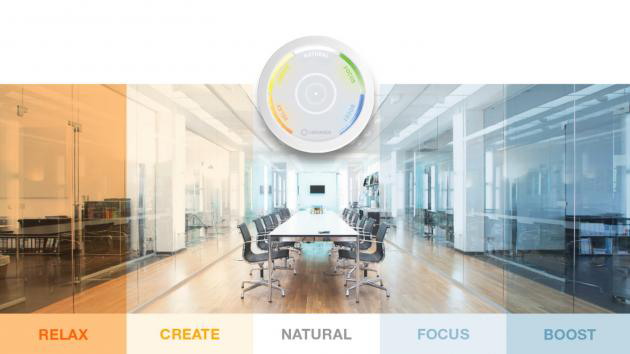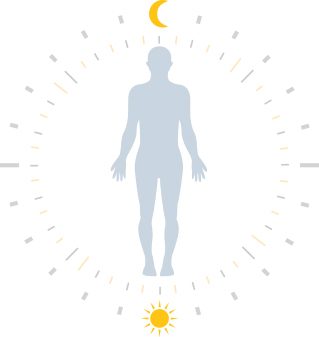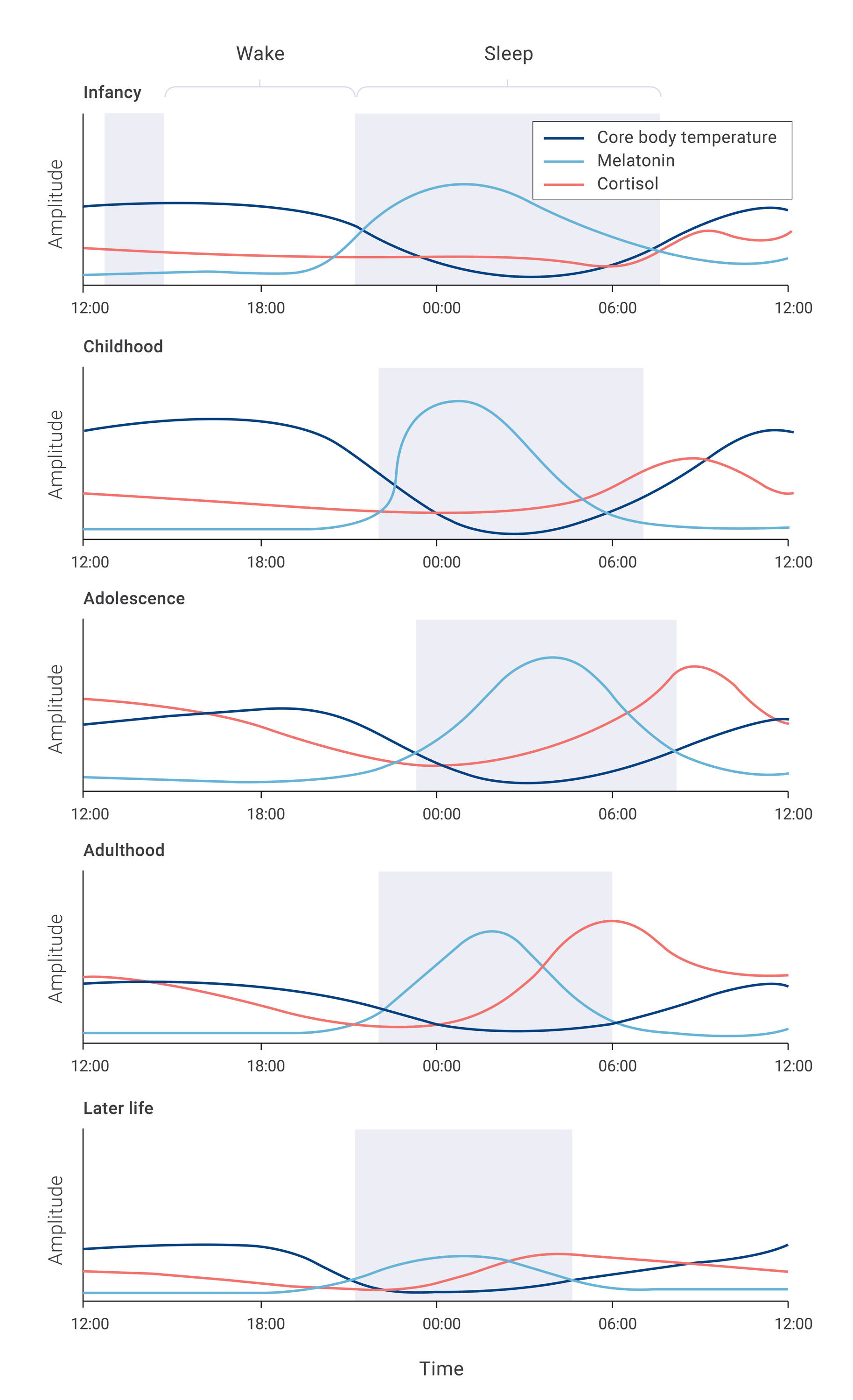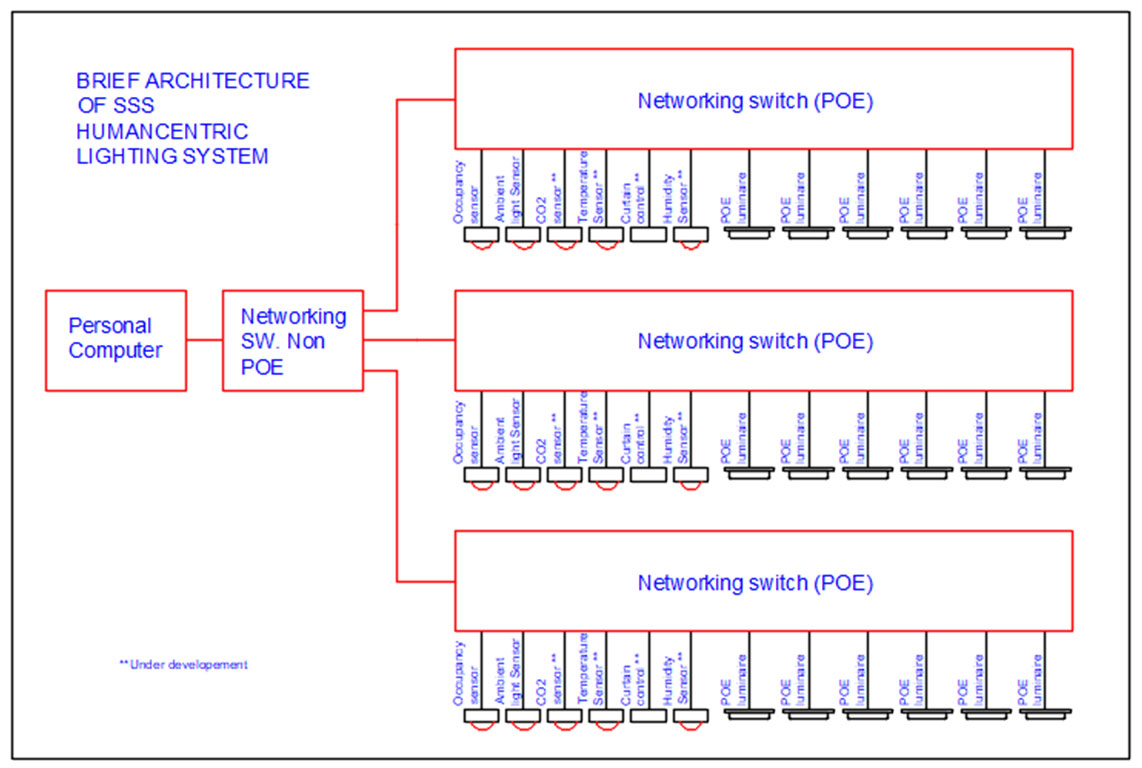For a long time, the lighting industry had invested practically all of its resources in technologies, solutions and products that fulfill our visual needs. It was not until the discovery of a third photoreceptor (besides rods and cones) in the human eye and the evidence of the biological influence from light that the lighting community began to relate human health and well-being to light. The finding on non-visual effects of light since then has challenged the industry to take a more holistic approach that simultaneously takes into account both the visual and biological needs of humans. Human centric lighting (HCL) takes up this challenge and opens up a whole new world of opportunities with the advances in LED lighting and Internet of Things (IoT).
Human centric lighting is a lighting concept that puts the focus on bringing the dynamics of natural daylight back into people's everyday lives through biologically effective artificial lighting. HCL goes beyond the basic visual needs of people. It helps the human body to stay aligned with natural circadian rhythms that the human being has been conditioned throughout its history.
HCL provides biologically optimized compositions of light to enhance concentration and productivity in the daytime working and learning environments while encouraging relaxation and regeneration during the night. The holistic design of biologically effective lighting systems considers the effects of light exposure on both biological and emotional aspects of human physiology and at the same time provides visually comfortable and supportive illumination to address the functional needs.

Human centric lighting is implemented using tunable white LED lighting systems which are equipped with different types of LEDs, dimmable LED drivers, and controllers that run sophisticated calibration algorithms for CCTs in all the possible combinations. Tunable white technology is designed to provide variable color temperature controls and independent control of light intensity, thereby enabling the creation of ambiances, scenes and moods for alignment with a natural circadian rhythm.HCL applications
Human centric lighting is devoted to mitigating physiological and psychological consequences resulted from the discrepancies between natural light and artificial light while also providing enhanced visual environments and improving people's performance.

Human centric lighting is making a difference in applications where people seek to heal disorders and conditions as a consequence of circadian disruptions, as well as in environments where an enhanced learning or working experience can be created with circadian lighting. Healthcare facilities have a clear need to implement HCL for creating a positive patient experience, promoting patient recovery, addressing patients' sleep issues, treating and/or preventing depressive symptoms. Because light with varying spectrums and intensities is found to support concentration, reduce fatigue and improve cognitive performance, education facilities are advantageously suited to deploy HCL systems that foster learning environments adapted to different activities. Other environments where circadian lighting can be applied include manufacturing facilities, office environments, and conference rooms
In essence, your Circadian Rhythm is your body’s clock. Your body naturally knows when to wake up and when to sleep. At all times of the day, your body is supposed to have a natural rhythm that guides your alertness, sleeping, and eating patterns. Studies of the Circadian Rhythm have shown that the intensity, timing, duration, and wavelength of light can affect the biological clock of humans.
In other words, our circadian rhythm can be interrupted by our constant use of bright man-made lighting (think about using your bright phone screen at night in bed). Disruptions in this rhythm can result in health issues such as obesity, cardiovascular and neurological problems like sleep disorders. Researchers have found that CCTs above 5500K (containing a high amount of blue light) can disrupt our circadian rhythm by keeping us up when we should naturally be sleeping.


Brighter "cool" lights keep us alert and awake. This, in turn, prevents us from resting our bodies and recharging for the next day’s activities. Tunable white LED lighting enables us to return to our natural circadian rhythm by giving us that range of lighting in either our homes or in the workplace. In the daytime when you need to focus, you can change the lighting to 6000K while in the evening before bed, you can decrease the CCT to 3000K, promoting the natural release of melatonin to help you sleep.
Apart from preventing health issues, tunable white LED lighting can also help regain healthy habits and normality in hospital patients. Many hospitals worldwide are now utilizing tunable white LED lighting not only as an energy saver, but they find that bright blue lighting increases a healthy appetite, increase in temperature and heart rate, and increased cognitive function. At night, warmer lighting allows for the calm low hormone levels and healing of patients. Not only that, but having a warmer lighting allows for medical staff to complete rounds without disrupting a patient's sleep.
When using lighting to assist in maintaining your circadian rhythm, you’ll likely be more productive and have better sleep. Your body uses sunlight to tell when certain things should happen, such as waking up or sleeping. So, if you’re indoors most of the day, circadian rhythm lighting can help your body function at its best and then start winding down at the right time to help you have the best sleep at night.
Increased Productivity Many of us have heard theories about the way that colder rooms in workplaces or educational settings help concentration. Working under the right lighting also helps us work diligently and increases our productivity ratios. Having the ability to tune the lights according to the needs of moods have a definite impact on productivity because of our circadian rhythm. If we are in a well-lit environment that natural mode is stimulated and we are much more energetic and focused. The following list further supports this lighting theory and allows us to see all the different places where lighting can be a positive influencer.
Classrooms Researchers have found that higher CCT lighting between the 4000K and 6000K helps with alertness and have dubbed this lighting “focus lighting”. The “focus lighting” used in a case study with third graders increased their oral reading fluency performance by almost 40 percent compared to normal controlled lighting.
In the same way that brighter lighting creates alertness, warmer lighting ensures tranquility, which is also a way to increase productivity in a classroom. Longer hours create restlessness in children. Tuning lights to 3000K helps with an easier transition from lunchtime and recess activities to independent work.
Offices Employees in a professional environment can also benefit from tunable white lighting. In an office setting, brighter lights seem to work better during the early hours and increase work-flow, whereas softer lights seem to work better with concentration in the evenings when everyone is jittery waiting for the clocks to strike that last working minute. This natural transition between brighter lights in the early hours and warmer lights in the evenings reflect our natural states and thus manipulate our moods. You can also use the lighting to create a specific mood/emotion for your customers who walk into your store.
How can you use Tunable Dynamic White Lighting?
Whether you choose to use tunable white lighting options to control ambiance or for health benefits, there are many different ways you can add tunable white LED strips to your décor. It can be used in just about any place.
Below are some places that take advantage of dim to warm lighting:
We believe that lighting is not something that should be considered as a final touch or an accessory to design. Lighting is just as important as the wood selection, angles of the structure, or color of the paint. Something important to note about tunable white lighting is that regardless of the style of architectural or interior design, accommodating lighting in order to enhance certain aspects of the building is crucial for the achievement of a certain look and quality. With this technology, you are able to not only dial in the perfect color of light to compliment or complete your vision, but you have full control to change the color depending on a future desired look.
After decades of focusing on LED lighting for energy efficiency, attention is shifting to intelligent PoE lighting and technologies that leverage the Internet of Things (IoT). The availability of low-cost, ultra-miniature LEDs, sensors and communications protocols now makes it possible to embed Internet connectivity into every lighting fixture and most low-wattage sensors, and to do so with a low price tag. Because the entire system is powered and controlled over a standard Ethernet connection and PoE ports, network-enabled PoE devices can provide any user immediate access and building automation control over the entire system.

LEDs are already used far beyond their basic lighting function in building automation applications to indicate occupancy, adjust mood, conserve energy and remote control. Their use expands by combining intelligence with movement or ambient light sensors and interconnecting the PoE lighting nodes in a programmable network.
These intelligent lighting advancements are now impacting all areas of society. From government buildings to healthcare facilities and homes, PoE’s lighting applications are quite diverse. From providing better intelligent lighting control to asset management, major IT network providers are providing PoE standards to enable Power over Ethernet lighting & IoT platform solutions to all industries.
Hospitals and other healthcare providers are facing a massive challenge to reduce costs, improve patient outcomes, and increase staff productivity and morale. And they need to do this while demonstrating a higher commitment to environmental sustainability with a long-term vision for assets. This can feel insurmountable.
One way to address all of these challenges is to choose the right IoT platform for the building that can provide flexibility to customize a health facility’s building to its unique needs. While current LED technology and intelligent lighting controls can reduce energy costs, alone they solve only one challenge. SSS PoE platform, is tightly integrated with its smart lighting solution yet has the capability to be one solution for many problems. SSS groundbreaking PoE Lighting & IoT platform can integrate with other building applications into one centralized system. For an already complex environment, SSS provides the necessary control, visual acuity and integration with building automation systems that can simplify the way things are run. This empowers the institution to improve the quality of care by carefully managing the patient’s circadian rhythms, monitoring noise levels, employing low lighting when needed, maintaining comfortable temperatures depending on space and light, optimizing staff resources, and ensuring patients feel safe and comfortable.
For patient comfort, employee safety, and budgets, hospital infrastructure development professionals believe that PoE specifications are critical in the implementation of hospital lighting today.
All basic, functional PoE systems should provide certain benefits to users, but SSS continues to strive to be on the forefront of this technology, offering unique and innovative smart building solutions.
Tunable White Lighting To have a white-tunable environment means that the lights are adjustable on a scale of warm, neutral, and cool lighting. Using the right balance of warm and cool lighting can help boost productivity, optimize shopping environments, enhance learning environments, and improve patient outcomes in healthcare facilities.
Advanced Analytics Through Igor’s fully integrated PoE communication platform, any lighting manufacturer’s LED fixtures and sensors can be connected to a powerful AI-enabled cloud analytics platform that allows users to create custom dashboards. A dashboard can display information such as energy usage, occupancy details and other sensor data.
Do you want to see how PoE lighting can be used to streamline your building’s lighting capabilities? Contact us today to learn more or request a demo.